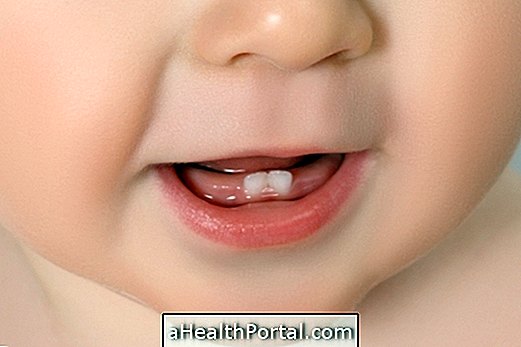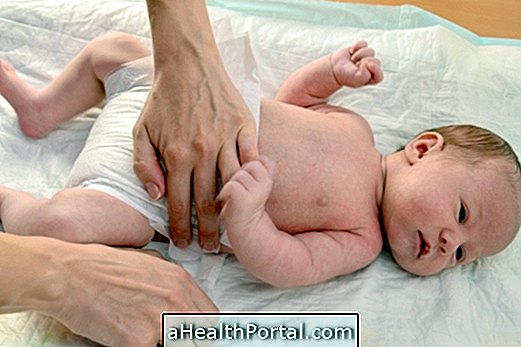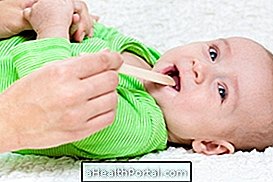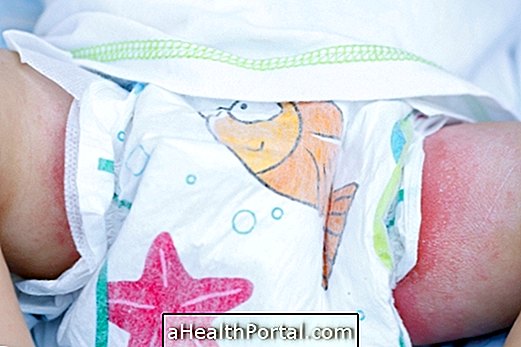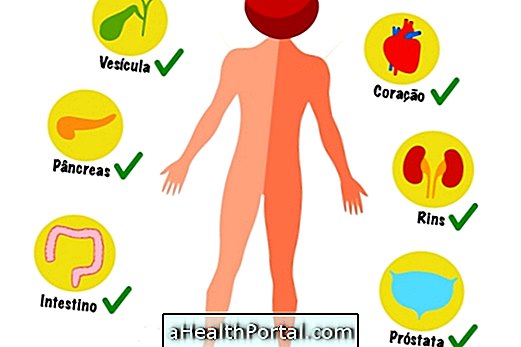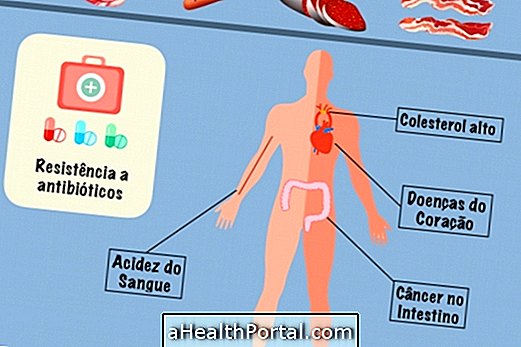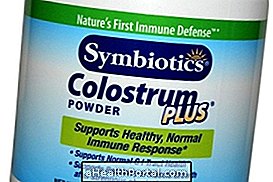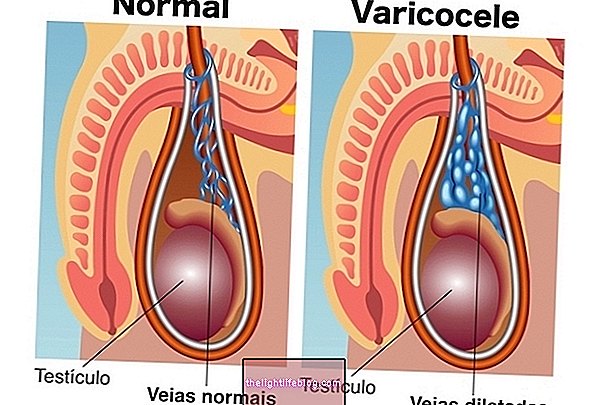Diarrhea with blood in the baby is uncommon, and so should be promptly investigated. Generally, bloody diarrhea is associated with infection by the retrovirus, bacteria, or worms. As soon as more than three bowel movements per day have been observed, with poo more liquid than usual, with a different color, strong smell and presence of blood, the baby should be taken to the pediatrician as soon as possible to investigate the cause and treatment can be started. Learn how to recognize diarrhea in the baby.
Until consultation and during treatment, it is important to keep the baby well hydrated and avoid feeding it with food that holds the intestine, as it may be that the cause of the diarrhea is eliminated in the feces.

Main causes
Diarrhea with blood in infants is worrying but can be easily treated as long as the pediatrician's guidance is sought and the cause is identified, so proper treatment can be started. The most common causes of bloody diarrhea in infants are:
1. Viral infection
Viral infection occurs mainly by Rotavirus, which causes severe diarrhea, strong odor of rotten eggs, vomiting and fever, and usually affects babies between 6 months and 2 years. Rotavirus infection is characterized by at least three fluid or liquid bowel movements during the day and may last from 08 to 10 days. The most common way to avoid rotavirus infection is through vaccination.
2. Bacterial infection
Some bacteria can cause bloody diarrhea in infants, such as Escherichia coli, Salmonella and Shigella .
Escherichia coli is part of the human intestinal microorganism population, but some types of E. coli are more harmful and can lead to gastroenteritis, which is characterized by bloody and / or mucous diarrhea, fever, vomiting, and stomach. These most harmful types are present in the environment, so it is possible to be contaminated by these types from contact with contaminated food and water. The symptoms of E. coli infection appear a few hours after infection and can be treated soon after medical and laboratory confirmation.
Salmonella and Shigella infections occur when there is contact with water or food contaminated with animal feces. Salmonella infection is called salmonellosis and is characterized by abdominal pain, vomiting, headache, fever and bloody diarrhea. Usually the symptoms of infection appear between 12 and 72 hours after infection. Symptoms of shigellosis, which is Shigella infection, are the same as those of salmonellosis and appear after a day or two of infection.
Because babies have the habit of putting everything in their mouths and playing around on the floor, infections with these bacteria are common. Therefore, the best way to prevent infection is by thoroughly washing babies' hands and food, as well as avoiding contact with any foreign matter that is potentially contaminating.
3. Worms
Worm infections are very common in areas with poor hygiene and sanitation. The presence of worms in the intestine may favor the occurrence of bloody diarrhea. These worms enter the intestine through the accidental ingestion of eggs of these parasites present in the soil and in food. That's why hygiene and the care with which the baby has contact is very important. See what are the symptoms of seeing me.
4. Ulcerative colitis
Ulcerative colitis can appear at any age, including infants, although it is rare. It is an irritation in the intestine caused by the presence of several wounds (ulcers) leading to diarrhea with the presence of blood. To treat colitis, your doctor usually tells you how to stop diarrhea and use some food supplements. Learn more about ulcerative colitis.

What to do
As soon as there is diarrhea with the presence of blood in the babies the most advised attitude is to go to the pediatrician so that the cause can be identified and thus the ideal treatment to be established. Also, it is very important that your baby drink plenty of water so as not to risk becoming dehydrated. It is also recommended not to eat foods that trap the intestine in the early days of diarrhea, as it may be that the virus, bacteria or worm comes out in the poop.
In the case of retrovirus infection, treatment usually involves fever-reducing medicines, such as ibuprofen and paracetamol. In bacterial infections, antibiotics may be prescribed, which varies according to the bacteria. For worm infections, the use of metronidazole, secnidazole or tinidazole is often indicated according to medical advice. Regarding colitis, the treatment is defined based on the physician's evaluation, which can vary from the use of antibiotics to having a balanced diet.
